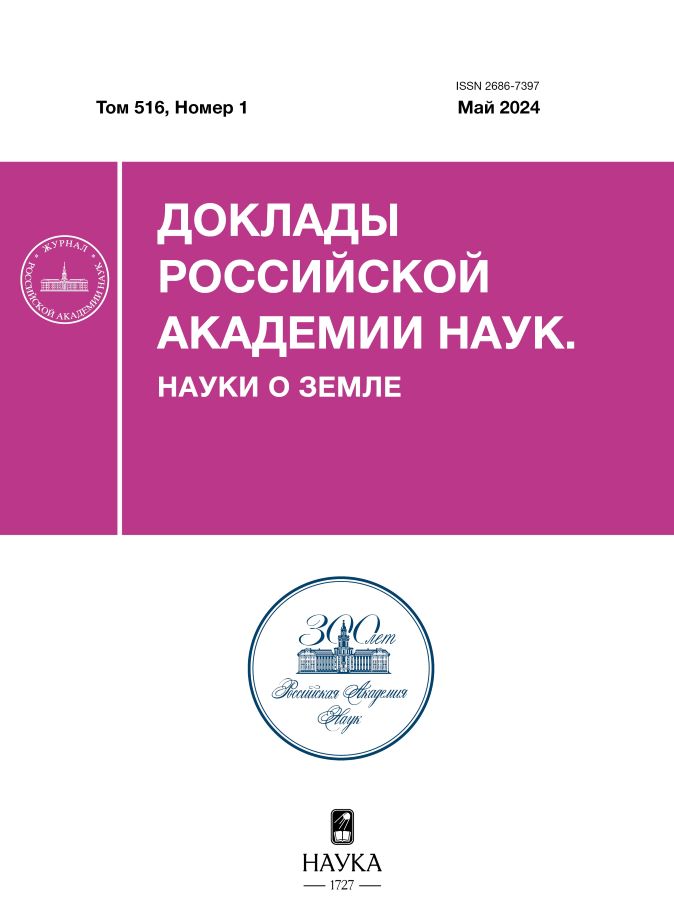Study of observed changes in the first harmonic amplitude of the daily precipitation amount series in the territory of Russia
- Авторлар: Popov I.O.1,2, Popova E.N.2
-
Мекемелер:
- Yu. A. Izrael Institute of Global Climate and Ecology
- Institute of Geography, Russian Academy of Sciences
- Шығарылым: Том 516, № 1 (2024)
- Беттер: 455-462
- Бөлім: CLIMATIC PROCESSES
- ##submission.dateSubmitted##: 31.01.2025
- ##submission.datePublished##: 18.12.2024
- URL: https://snv63.ru/2686-7397/article/view/650073
- DOI: https://doi.org/10.31857/S2686739724050177
- ID: 650073
Дәйексөз келтіру
Аннотация
Using the data from weather observation stations, an assessment of the statistical significance of the first harmonic amplitude of the average long-term daily precipitation amount series in Russia in 1961–2020 and their changes in 1991–2020 compared to 1961–1990 is made. It is shown that at most stations the first harmonic has a reliable value different from the noise, except for eleven stations in the southern regions of the European Part of Russia. It is revealed that, on average, there is a significant decrease in the first harmonic amplitudes of the daily precipitation series across Russia. An analysis of the spatial distribution of the studied quantities is performed and the presence of large areas with their homogeneous character is demonstrated.
Негізгі сөздер
Толық мәтін
Авторлар туралы
I. Popov
Yu. A. Izrael Institute of Global Climate and Ecology; Institute of Geography, Russian Academy of Sciences
Хат алмасуға жауапты Автор.
Email: igor_o_popov@mail.ru
Ресей, Moscow; Moscow
E. Popova
Institute of Geography, Russian Academy of Sciences
Email: en_popova@mail.ru
Ресей, Moscow
Әдебиет тізімі
- Strangeways I. Precipitation. Theory, Measurement and Distribution. Cambridge University Press. 2007. doi: 10.1017/CBO9780511535772.
- Хромов С. П., Петросянц М. А. Метеорология и климатология. М.: Издательство Московского Университета, 2012. 582 с.
- Markham C. G. Seasonality of Precipitation in the United States // Annals of the Association of American Geographers. 1970. T. 60. V. 3. P. 593–597.
- Imteaz M. A., Hossain I. Climate Change Impacts on ‘Seasonality Index’ and its Potential Implications on Rainwater Savings // Water Resource Manage. 2023. V. 37. P. 2593–2606. doi: 10.1007/s11269-022-03320-z.
- Лайонс Р. Цифровая обработка сигналов. М.: “Бином”, 2006. 656 с.
- Nasser R. A., Hedayat F. Rainfall Forecasting Using Fourier Series // Journal of Civil Engineering and Architecture. 2012. V. 6. № 9. P. 1258–1262. doi: 10.17265/1934-7359/2012.09.019.
- Villarreal F. J. G., Mendoza V. I. M. Fast Fourier transform analysis of precipitation data for the Colorado river basin // Proceedings of the 37th IAHR World Congress (Kuala Lumpur, Malaysia, August 13–18, 2017). P. 5639–5645.
- Ussalu J. L. M., Bassrei A. Climate dynamics of southern region of Mozambique: statistics and Fourier analysis // Revista Brasileira de Climatologia. 2021. V. 29. P. 134–156. DOI: http://dx.doi.org/10.5380/rbclima.v29i0.75088
- Morales J. E., Poveda G. Diurnally driven scaling properties of Amazonian rainfall fields: Fourier spectra and order-q statistical moments // Journal of Geophysical Research. 2009. V. 114. P. 1–10. D11104, doi: 10.1029/2008JD011281
- Marshall G. J. On the annual and semi-annual cycles of precipitation across Antarctica // International Journal of Climatology. 2009. V. 29. № 15. P. 2298–2308. doi: 10.1002/joc.1810.
- Третий оценочный доклад об изменениях климата и их последствиях на территории Российской Федерации / под ред. В.М. Катцова; Росгидромет. СПб.: “Наукоемкие технологии”, 2022. 676 с.
- Popova E. N., Popov I. O., Semenov S. M. Assessment of Variations in the Annual Sum of Active Temperatures and Total Precipitation during the Vegetation Period in Russia and Neighboring Countries // Russian Meteorology and Hydrology. 2018. V. 43. № 6. P. 412–417.
- Золина О. Г., Булыгина О. Н. Современная климатическая изменчивость характеристик экстремальных осадков в России // Фундаментальная и прикладная климатология. 2016. Т. 1. С. 84–103. doi: 10.21513/2410-8758-2016-1-84-103
- Aleshina M. A., Semenov V. A, Chernokulsky A. V. A link between surface air temperature and extreme precipitation over Russia from station and reanalysis data // Environmental Research Letters. 2021. V. 16. № 10. 105004. doi: 10.1088/1748-9326/ac1cba.
- Попов И. О., Попова Е. Н. Анализ изменения режима осадков на территории Российской Федерации во второй половине 20–начале 21 века с применением байесовской оценки параметров марковской цепи // Доклады Российской Академии наук. Науки о Земле. 2022. Т. 502. № 1. С. 38–44. doi: 10.31857/S2686739722010054.
- Zolina O., Simmer C., Gulev S. K., Kollet S. Changing structure of European precipitation: Longer wet periods leading to more abundant rainfalls // Geophysical Research Letters. 2010. V. 37. L06704. doi: 10.1029/2010GL042468.
- Pruscha H. Statistical Analysis of Climate Series. Berlin; Heidelberg: Springer, 2013. 176 p. doi: 10.1007/978-3-642-32084-2.
- Brockwell P. J., Davis R. A. Time Series: Theory and Methods. New York, N.Y.: Springer, 1991. 580 p. doi: 10.1007/978-1-4419-0320-4.
- Roe G. H. Orographic Precipitation // Annual Review of Earth and Planetary Sciences. 2005. V. 33. P. 645–671. doi: 10.1146/annurev.earth.33.092203.122541.
- Wang B., Li X., Huang Y., Zhai G. Decadal trends of the annual amplitude of global precipitation // Atmospheric Science Letters. 2016. V. 17. P. 96–101. doi: 10.1002/asl2.631.
Қосымша файлдар













